Gavin Weiguang Ding
CDT: Cascading Decision Trees for Explainable Reinforcement Learning
Nov 15, 2020

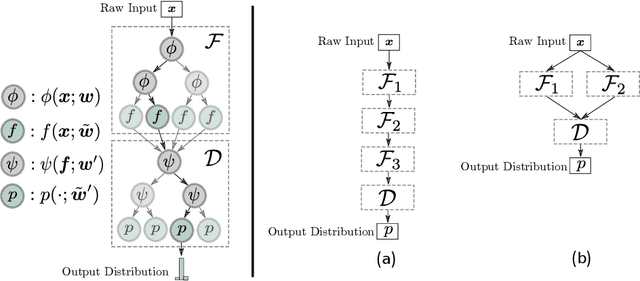
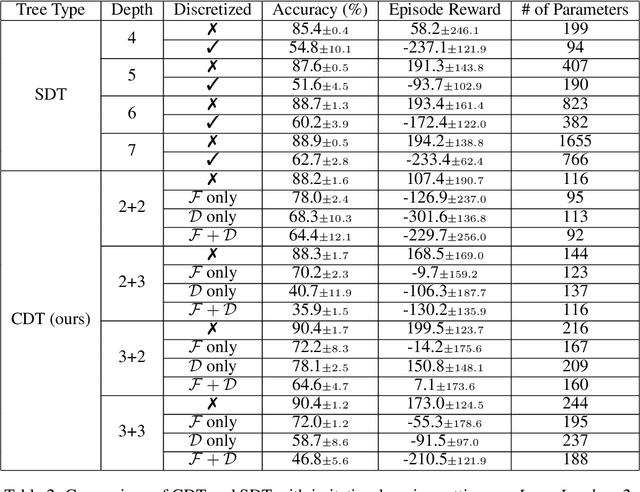
Abstract:Deep Reinforcement Learning (DRL) has recently achieved significant advances in various domains. However, explaining the policy of RL agents still remains an open problem due to several factors, one being the complexity of explaining neural networks decisions. Recently, a group of works have used decision-tree-based models to learn explainable policies. Soft decision trees (SDTs) and discretized differentiable decision trees (DDTs) have been demonstrated to achieve both good performance and share the benefit of having explainable policies. In this work, we further improve the results for tree-based explainable RL in both performance and explainability. Our proposal, Cascading Decision Trees (CDTs) apply representation learning on the decision path to allow richer expressivity. Empirical results show that in both situations, where CDTs are used as policy function approximators or as imitation learners to explain black-box policies, CDTs can achieve better performances with more succinct and explainable models than SDTs. As a second contribution our study reveals limitations of explaining black-box policies via imitation learning with tree-based explainable models, due to its inherent instability.
Cascaded Deep Neural Networks for Retinal Layer Segmentation of Optical Coherence Tomography with Fluid Presence
Dec 07, 2019
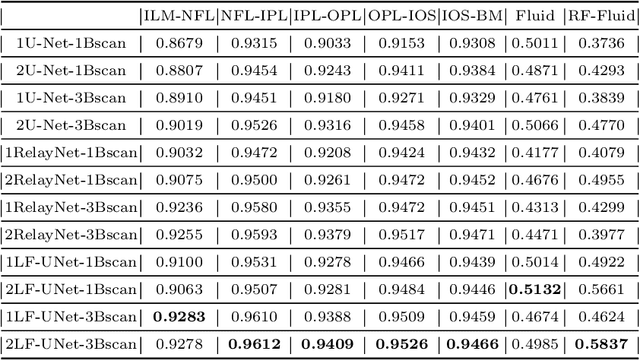
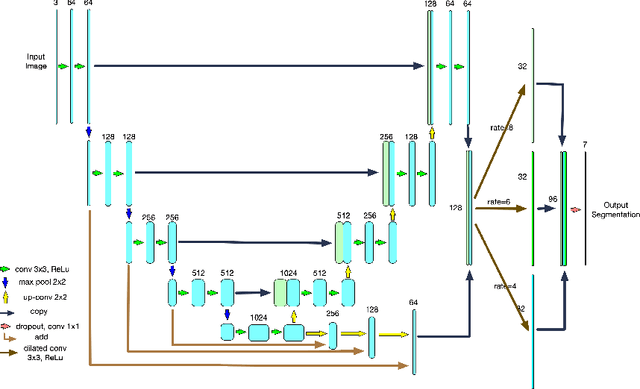
Abstract:Optical coherence tomography (OCT) is a non-invasive imaging technology which can provide micrometer-resolution cross-sectional images of the inner structures of the eye. It is widely used for the diagnosis of ophthalmic diseases with retinal alteration, such as layer deformation and fluid accumulation. In this paper, a novel framework was proposed to segment retinal layers with fluid presence. The main contribution of this study is two folds: 1) we developed a cascaded network framework to incorporate the prior structural knowledge; 2) we proposed a novel deep neural network based on U-Net and fully convolutional network, termed LF-UNet. Cross validation experiments proved that the proposed LF-UNet has superior performance comparing with the state-of-the-art methods, and incorporating the relative distance map structural prior information could further improve the performance regardless the network.
On the Effectiveness of Low Frequency Perturbations
Feb 28, 2019

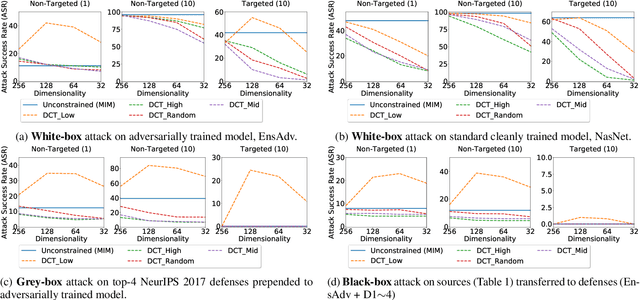
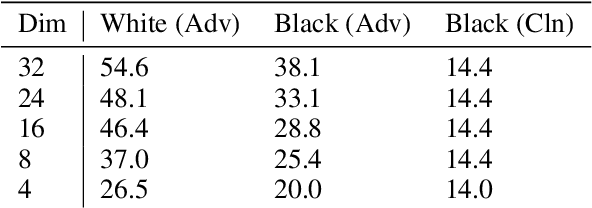
Abstract:Carefully crafted, often imperceptible, adversarial perturbations have been shown to cause state-of-the-art models to yield extremely inaccurate outputs, rendering them unsuitable for safety-critical application domains. In addition, recent work has shown that constraining the attack space to a low frequency regime is particularly effective. Yet, it remains unclear whether this is due to generally constraining the attack search space or specifically removing high frequency components from consideration. By systematically controlling the frequency components of the perturbation, evaluating against the top-placing defense submissions in the NeurIPS 2017 competition, we empirically show that performance improvements in both optimization and generalization are yielded only when low frequency components are preserved. In fact, the defended models based on (ensemble) adversarial training are roughly as vulnerable to low frequency perturbations as undefended models, suggesting that the purported robustness of proposed defenses is reliant upon adversarial perturbations being high frequency in nature. We do find that under $\ell_\infty$ $\epsilon=16/255$, a commonly used distortion bound, low frequency perturbations are indeed perceptible. This questions the use of the $\ell_\infty$-norm, in particular, as a distortion metric, and suggests that explicitly considering the frequency space is promising for learning robust models which better align with human perception.
On the Sensitivity of Adversarial Robustness to Input Data Distributions
Feb 22, 2019
Abstract:Neural networks are vulnerable to small adversarial perturbations. Existing literature largely focused on understanding and mitigating the vulnerability of learned models. In this paper, we demonstrate an intriguing phenomenon about the most popular robust training method in the literature, adversarial training: Adversarial robustness, unlike clean accuracy, is sensitive to the input data distribution. Even a semantics-preserving transformations on the input data distribution can cause a significantly different robustness for the adversarial trained model that is both trained and evaluated on the new distribution. Our discovery of such sensitivity on data distribution is based on a study which disentangles the behaviors of clean accuracy and robust accuracy of the Bayes classifier. Empirical investigations further confirm our finding. We construct semantically-identical variants for MNIST and CIFAR10 respectively, and show that standardly trained models achieve comparable clean accuracies on them, but adversarially trained models achieve significantly different robustness accuracies. This counter-intuitive phenomenon indicates that input data distribution alone can affect the adversarial robustness of trained neural networks, not necessarily the tasks themselves. Lastly, we discuss the practical implications on evaluating adversarial robustness, and make initial attempts to understand this complex phenomenon.
advertorch v0.1: An Adversarial Robustness Toolbox based on PyTorch
Feb 20, 2019Abstract:advertorch is a toolbox for adversarial robustness research. It contains various implementations for attacks, defenses and robust training methods. advertorch is built on PyTorch (Paszke et al., 2017), and leverages the advantages of the dynamic computational graph to provide concise and efficient reference implementations. The code is licensed under the LGPL license and is open sourced at https://github.com/BorealisAI/advertorch .
Max-Margin Adversarial (MMA) Training: Direct Input Space Margin Maximization through Adversarial Training
Dec 06, 2018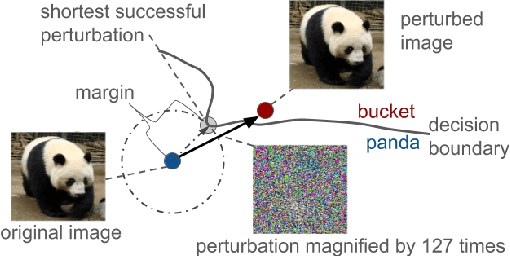
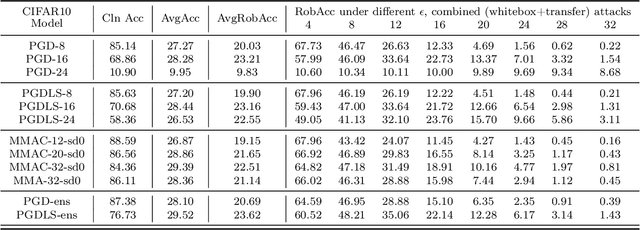
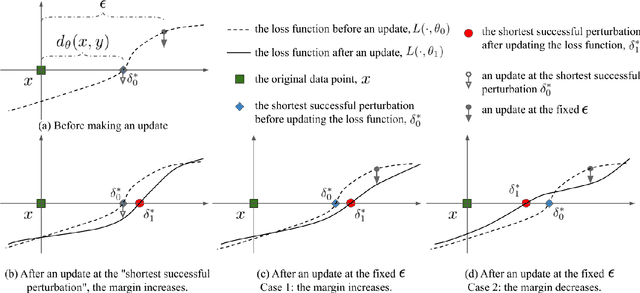
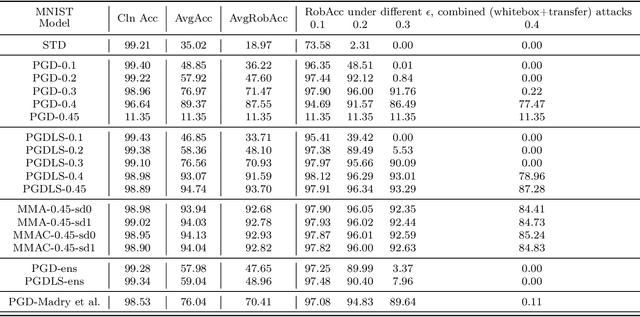
Abstract:We propose Max-Margin Adversarial (MMA) training for directly maximizing the input space margin. This margin maximization is direct, in the sense that the margin's gradient w.r.t. model parameters can be shown to be parallel with the loss' gradient at the minimal length perturbation, thus gradient ascent on margins can be performed by gradient descent on losses. We further propose a specific formulation of MMA training to maximize the average margin of training examples in order to train models that are robust to adversarial perturbations. It is implemented by performing adversarial training on a novel adaptive norm projected gradient descent (AN-PGD) attack. Preliminary experimental results demonstrate that our method outperforms the existing state of the art methods. In particular, testing against both white-box and transfer projected gradient descent attacks on MNIST, our trained model improves the SOTA $\ell_\infty$ $\epsilon=0.3$ robust accuracy by 2\%, while maintaining the SOTA clean accuracy. Furthermore, the same model provides, to the best of our knowledge, the first model that is robust at $\ell_\infty$ $\epsilon=0.4$, with a robust accuracy of $86.51\%$.
Dimensionality Reduction has Quantifiable Imperfections: Two Geometric Bounds
Oct 31, 2018

Abstract:In this paper, we investigate Dimensionality reduction (DR) maps in an information retrieval setting from a quantitative topology point of view. In particular, we show that no DR maps can achieve perfect precision and perfect recall simultaneously. Thus a continuous DR map must have imperfect precision. We further prove an upper bound on the precision of Lipschitz continuous DR maps. While precision is a natural measure in an information retrieval setting, it does not measure `how' wrong the retrieved data is. We therefore propose a new measure based on Wasserstein distance that comes with similar theoretical guarantee. A key technical step in our proofs is a particular optimization problem of the $L_2$-Wasserstein distance over a constrained set of distributions. We provide a complete solution to this optimization problem, which can be of independent interest on the technical side.
* 32nd Conference on Neural Information Processing Systems (NIPS 2018), Montreal, Canada
Improving GAN Training via Binarized Representation Entropy (BRE) Regularization
May 09, 2018



Abstract:We propose a novel regularizer to improve the training of Generative Adversarial Networks (GANs). The motivation is that when the discriminator D spreads out its model capacity in the right way, the learning signals given to the generator G are more informative and diverse. These in turn help G to explore better and discover the real data manifold while avoiding large unstable jumps due to the erroneous extrapolation made by D. Our regularizer guides the rectifier discriminator D to better allocate its model capacity, by encouraging the binary activation patterns on selected internal layers of D to have a high joint entropy. Experimental results on both synthetic data and real datasets demonstrate improvements in stability and convergence speed of the GAN training, as well as higher sample quality. The approach also leads to higher classification accuracies in semi-supervised learning.
 Add to Chrome
Add to Chrome Add to Firefox
Add to Firefox Add to Edge
Add to Edge